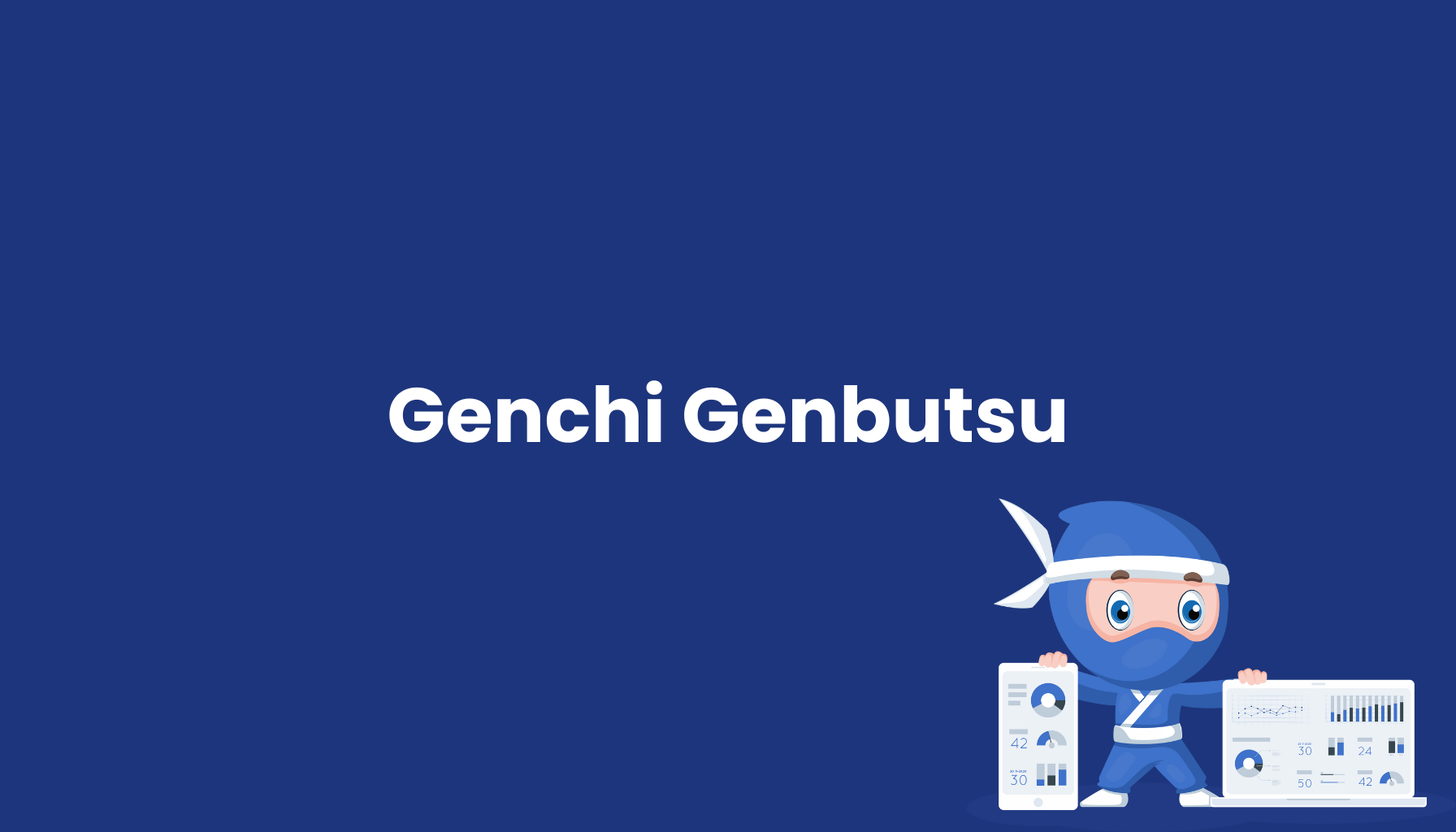Genchi Genbutsu

Definition
Genchi Genbutsu (現地現物) is a fundamental Japanese management principle meaning "go to the actual place and see the actual things." This Lean philosophy emphasizes the importance of direct observation and personal presence on-site to understand problems, gather facts, and make informed decisions based on Gemba (the real workplace), rather than relying exclusively on reports or secondary information.
Philosophical Foundations
Direct Observation: Personal presence at the site of action provides unfiltered, authentic information. Reality check through personal perception instead of third-party interpretation.
Fact-based Decision Making: Decisions based on directly observed facts rather than assumptions or abstract data. Empirical evidence as foundation for problem solving.
Respect for People: Appreciation of expertise and experience of workers on-site. Shop floor wisdom recognized as valuable information source.
Continuous Learning: Personal development through direct experience and practical understanding. Hands-on knowledge building.
Toyota Production System Integration
Management by Walking Around: Leaders regularly spend time at Gemba (workplace) for direct process understanding. Shop floor leadership.
Problem Solving: Root cause analysis occurs at the source through direct observation of processes. Real-time problem investigation.
Kaizen Activities: Continuous improvement initiatives based on Gemba insights. Bottom-up innovation through frontline insights.
Standardized Work: Work standardization through detailed observation of actual best practices on-site.
Organizational Benefits
- Authentic Understanding: Deep, unfiltered understanding of actual work processes and challenges
- Better Decision Making: Informed decisions based on direct observations rather than abstract reports
- Employee Engagement: Employee appreciation through personal interest and leadership presence
- Rapid Problem Resolution: Faster problem identification and resolution through direct intervention
- Innovation Catalyst: Innovative solutions emerge through direct contact with real problems
Applications
Manufacturing Operations: Production managers daily visit various manufacturing areas for quality checks, safety observations, and process improvements. Gemba walks identify waste and optimization potential.
Service Companies: Restaurant managers regularly work in different areas (kitchen, service, cashier) for direct understanding of customer experience and operational challenges.
Healthcare: Hospital administrators spend time in various departments (ER, ICU, patient rooms) for direct understanding of patient care and staff challenges.
Software Development: Development leaders directly observe user interactions, testing processes, and support calls for authentic product understanding.
Gemba Walk Methodology
Preparation: Define specific purpose and focus areas for Gemba walk. Objective setting for targeted learning.
Observation: Silent observation without immediate intervention or judgment. Note taking for later analysis and follow-up.
Questions: Open questions to employees about processes, challenges, and improvement ideas. Listening skills for authentic insights.
Follow-up: Concrete actions and improvements based on observations. Feedback loop to employees about implemented changes.
Leadership Competencies
Humility: Humble attitude and willingness to learn from frontline workers. Beginner's mind for new insights.
Curiosity: Genuine interest in details and root causes instead of superficial symptom treatment. Deep dive mentality.
Patience: Investing time for thorough observation and understanding development. Slow thinking for sustainable solutions.
Empathy: Understanding of employee perspectives and daily challenges. Emotional intelligence in management approach.
Implementation Practices
Regular Schedule: Structured, regular Gemba walks as fixed component of management calendar. Consistency for sustainable culture.
Cross-functional Visits: Visits to different areas outside own responsibility for holistic understanding.
Note Documentation: Systematic recording of observations, insights, and follow-up actions. Learning repository.
Team Integration: Joint Gemba walks with team members for shared learning and perspective alignment.
Technology Integration
Digital Gemba: Virtual Reality and remote monitoring extend Genchi Genbutsu principles to geographically distributed operations.
Mobile Documentation: Smartphone apps for real-time note taking and photo documentation during Gemba walks.
Data Overlay: Combination of direct observation with real-time data analytics for enhanced understanding.
Cultural Implementation
Role Modeling: Senior leadership demonstrates Genchi Genbutsu through own behavior. Leadership by example.
Training Programs: Systematic training for managers in Genchi Genbutsu techniques and Gemba walk methods.
Recognition Systems: Recognition and rewards for managers living authentic Genchi Genbutsu practices.
Storytelling: Sharing success stories and learnings from Genchi Genbutsu experiences for cultural reinforcement.
Measurable Results
Problem Resolution Time: Faster problem identification and solution implementation through direct observation.
Employee Satisfaction: Improved morale through management presence and interest in frontline work.
Process Improvements: Higher rate of Kaizen suggestions and implemented improvements.
Quality Metrics: Better quality outcomes through direct quality observation and intervention.
Challenges and Solutions
Time Constraints: Busy executives must prioritize time for Gemba walks. Time blocking and calendar protection.
Cultural Resistance: Employees may initially feel uncomfortable with management presence. Trust building through consistent behavior.
Surface-level Observation: Risk of superficial visits without deep understanding. Training in observation skills.
Integration with Other Lean Principles
Kaizen: Genchi Genbutsu informs continuous improvement initiatives through direct problem identification.
Jidoka: Quality-at-source principle supported through direct quality observation.
Just-in-Time: Flow improvements based on direct observation of bottlenecks and waste.
Future Trends
Augmented Reality: AR technology enhances direct observation with digital information overlays for enhanced understanding.
AI-supported Insights: Machine learning analyzes patterns from Gemba walk notes for systematic improvement recommendations.
Remote Gemba: COVID-19 has developed remote observation techniques that adapt Genchi Genbutsu principles for distributed teams.
Genchi Genbutsu remains a timeless management principle that enables sustainable leadership success through personal authenticity, direct observation, and real-world understanding, even in digital times.


